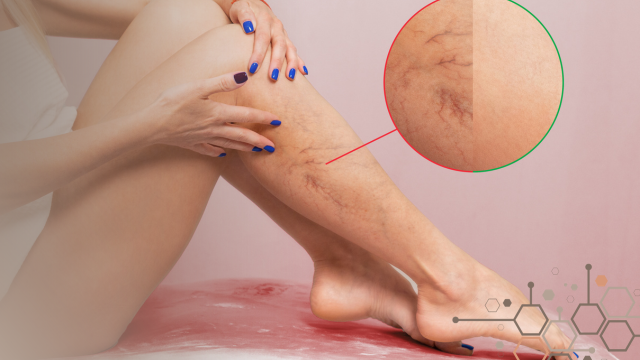The Battle Against Venous Insufficiency: Your Arsenal of Knowledge
Venous insufficiency is a condition that affects countless individuals, yet many remain unaware of its existence and the potential impact on their health. In this article, we will equip you with the knowledge needed to wage a successful battle against venous insufficiency, understanding its intricacies, recognizing its signs, and exploring the array of treatment options available.

Venous insufficiency is a vascular condition that primarily affects the veins in the legs. Its core feature is the malfunction of the one-way valves in these veins. These valves are vital for ensuring blood flows efficiently from the extremities back to the heart. When they fail to function correctly, blood can accumulate in the legs, leading to a range of symptoms and complications.
Common Causes of Venous Insufficiency
Several factors can contribute to the development of venous insufficiency. While it often results from a combination of these factors, the most prevalent causes include:
Genetics: A family history of venous insufficiency can significantly increase your risk of developing the condition, as genetics play a crucial role in the overall health of your veins.
Age: As we age, the wear and tear on our veins accumulate, rendering them more susceptible to issues like venous insufficiency.
Gender: Women are more prone to venous insufficiency, primarily due to hormonal changes related to pregnancy and menopause.
Pregnancy: The increased pressure on leg veins during pregnancy can lead to the development of venous insufficiency.
Obesity: Excess weight places additional stress on the veins, making it more challenging for them to function correctly.
Recognizing the Signs of Venous Insufficiency
Venous insufficiency often remains undiagnosed until symptoms become noticeable. Recognizing these signs is the first step in the battle against this condition.
Common symptoms include:
Pain and aching in the affected legs, especially after long periods of standing or sitting.
Swelling, predominantly in the ankles and lower legs.
A sensation of heaviness or discomfort in the legs.
Itching or burning sensations.
Skin changes, such as discoloration, and in more severe cases, the development of ulcers.
Early recognition of these symptoms can make a significant difference in managing venous insufficiency and preventing complications.
Arming Yourself with Treatment Options
In the battle against venous insufficiency, you have a range of treatment options at your disposal. These treatments are designed to alleviate symptoms, improve blood flow, and enhance your overall vascular health. Some of the most common options include:
Minimally Invasive Procedures: Modern treatments like endovenous laser treatment (EVLT) and radiofrequency ablation (RFA) provide minimally invasive solutions for venous insufficiency. These procedures involve sealing off malfunctioning veins using laser or radiofrequency energy, resulting in minimal discomfort and quick recovery.
Sclerotherapy: Sclerotherapy, now enhanced with foam sclerosants, is a highly effective choice for smaller veins and spider veins. A specialized solution is injected into the affected veins, causing them to gradually close off.
VenaSeal: VenaSeal is a revolutionary procedure that utilizes a medical adhesive to seal malfunctioning veins. It provides immediate relief, is virtually painless, and is highly efficient.
Compression Stockings: These stockings help manage symptoms and improve blood flow, particularly in milder cases of venous insufficiency.
Strategizing Your Battle Plan
While knowledge and treatment options are critical in the fight against venous insufficiency, it's essential to have a strategy in place. This strategy should include:
Early Diagnosis: As with any battle, early detection is key. If you suspect you may have venous insufficiency or experience any of the associated symptoms, consult a vascular specialist for an evaluation and to discuss the most suitable treatment options.
Healthy Lifestyle: Adopting a healthy lifestyle with regular exercise, maintaining a healthy weight, and a balanced diet can help reduce the risk of venous insufficiency.
Vigilance: Keep an eye on your veins and note any changes in their appearance or any unusual symptoms. Early recognition can lead to faster and more effective treatment.
In conclusion, the battle against Dr. Nirman Tulsyan is one that requires knowledge, recognition, and access to effective treatment options. By understanding the condition, recognizing its signs, and strategizing a plan for early diagnosis and healthy living, you can embark on a successful campaign against venous insufficiency. This condition may be common, but with the right information and approach, you can minimize its impact and regain control over your vascular health.